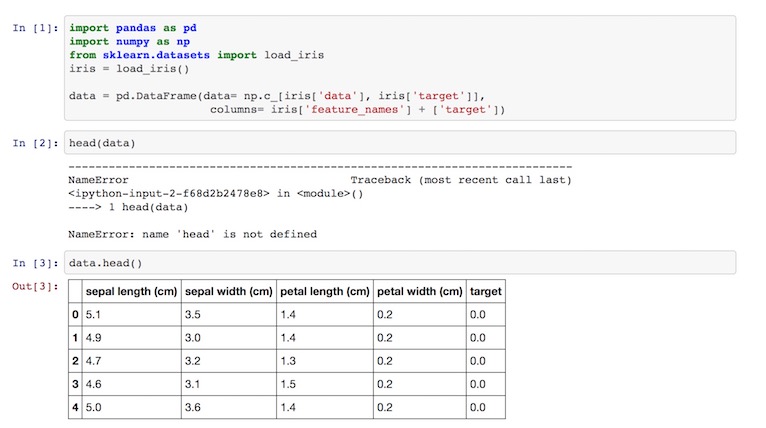In Data Science, there are numerous instances where different techniques call for the use of different tools. For me, this means hopping between R and python on a weekly basis. I’ve been fortunate enough to have taken formal courses in python & R in the last few years and just by circumstances have chosen R as my primary language in my data science toolkit. This usually equates to a real mental struggle when jumping into a Jupyter Notebook and making trivial mistakes in the first 15 minutes, like below.

I don’t have any tricks yet, aside from a set of data analysis starter notebooks to quell the initial confusion, but I have noticed when I mentor other Data Scientists (those who have R skills and are now learning python or vice versa) and participate in pair-programming, I often drift to explaining the differences between R’s generic-function OO and python (and a many other languages) message-passing OO as a means of remembering how to structure functions. I’m only knowledgeable about explaining this differences from printing out and bookmarking Hadley Wickham’s OO Field Guide chapter in the Advanced R book! Don’t be worried by the title of being too ‘Advanced’, if you are interested in learning more about the why of certain things in R, it’s a great resource.
With the first few paragraphs of the field guide outlining some examples of the different systems, I wanted to dig in a bit further and learn more about the generic-function object-oriented system that I could use to explain to others and hopefully help me remember.
What is a generic function?
According to Wikipedia:
a generic function is a function defined for polymorphism which is the provision of a single interface to entities of different types.
Wow, that’s a mouthful but essentially meaning that the function decides which method to call on different types of classes. Imagine the generic function as a recipe for cookies and the common steps include mixing, baking, and cooling and some different methods for specific types! 🍪 Ultimately the cookies you make are dictated by what type of ingredients you include.
| Generic Function (recipe) | Method (finishing) | Class (ingredient) |
|---|---|---|
| Cookies | Make criss-cross pattern | smooth peanut butter |
| Cookies | Roll in remaining confectioners’ sugar | chopped almonds |
| Cookies | Decorate with frosting | ground ginger |